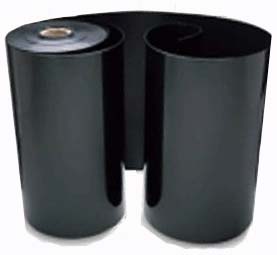
Planting and care of Bamboo include indoor applications
Bamboo is a fairly tough plant that doesn’t require any special techniques to plant, and it requires little, if any, ongoing care.
The following instructions are merely suggestions based on the methods that have worked for me.
1.Planting: I like to dig an extra large hole and mix the dirt that comes out with a bag of potting soil or composted manure. I then put some of the soil mixture back into the bottom of the hole and turn the water hose (or a bucket of water if the water hose doesn’t reach) into the hole and mix it up to create a very soupy mud. I then take the root ball and twist it gently down into the mud to a level that will ensure the top of the bamboo root ball remains at about the original soil line. Generally the mud squishes up the sides and I am left will only a small space that needs to be filled with more soil. This “mudding” method ensures that air pockets get filled.
2.Mulch: Next thing I do is spread out a generous layer of mulch around the base of the plant. At least 6 inches deep and however big around I have the mulch to make it. This is very important bamboo loves mulch! It will keep the weeds down, protect the plant during periods of extreme cold, hold in moisture, and improve the soil quality. For mulch you can use whatever you have access too: grass clippings, leaves, cured woodchips or bark, etc. I live near a saw mill, and was able to obtain a dump truck load of old bark, which works extremely well. You could go with bags of mulch from Lowes if needed.
3. Care: Bamboo is a grass so care is basically the same as your lawn. If your soil is acidic you should occasional add some lime. I use a general purpose fertilizer, such as 10-10-10, in the spring and fall. This is optional as I have seen numerous huge, healthy groves growing without a shred of fertilizer or lime. Lack of nutrients could, however, reduce the speed at which your grove establishes or affect the size of the canes.
4.Watering: Overall bamboo is very drought resistant and doesn’t require more water than any other natural plant. If you plant bamboo in very hot, dry conditions watering till established, however, is important. I would probably water a new plant every 2-3 days for the first few weeks and then generally normal rainfall is sufficient. It is important to note that bamboo is not a plant that loves swampy or overly wet conditions. If the ground stays saturated all the time it is likely your bamboo will die. Temperate running bamboo varieties need well drained soil to thrive. Bamboo will often tell you when it needs watering by rolling up its leaves, and sometimes over-watering can cause black splotches to form on the leaves
5. Growing Bamboo Indoors:
Growing bamboo indoors can be difficult and will take a bit more work than growing it outside. Here are some suggestions to help make indoor bamboo plants more successful.
General Instructions
Bamboo does not like the mostly dry air typical of indoor environments, using a spray bottle a few times per week to wet the foliage will create more moisture in the air. You can also sit the planter in a tray of pebbles filled with water. This should increase the humidity in the general area.
Because air can get stale and stagnant indoors, a small oscillating fan will mimic the breeze of the outdoors. Leaving it on a low setting for a few hours a week is plenty. It will also help to create more humidity around the bamboo when used in conjunction with the spray bottle. It is helpful to rotate the bamboo outside for certain periods of time.
An over-watered bamboo is just as easily killed as under-watered bamboo. To keep things simple use a water meter to check the moisture level. It should have three basic settings, you want to try and keep the moisture level in the middle range. Make sure you are taking the reading from 4-6 inches below the surface of soil. Do not ever let it dry out for an extended period of time (more than 3-5 days) the goal is to keep the soil from staying soggy or desert dry. Mature bamboos may need more water as there will be more roots and less soil to retain moisture in the pot. Eventually dividing the plant or transplanting into a larger pot will be necessary.
Fertilizing with high- nitrogen slow release formula in the spring ensures the bamboo is getting proper nutrients. Apply according to the manufactures dosage and pot size.
Over time bamboo will look best if pruned, cutting out older canes at soil level or removing heavy branches will make for the best looking plant. Remember that some yellowing of the foliage is normal especially during the Spring and Fall. Regardless of your efforts over time root bound bamboo may begin to look ragged. I’ve noticed that even in the high humidity of the greenhouse after about a year of being potted, bamboo just doesn’t look as vibrant as it did outside. When you get to this point you may want to take the bamboo out, divide the root ball, and re-pot a smaller one in fresh new dirt.
6. Pests: The only 2 pests that I know of for bamboo are some types of aphids and bamboo spider mites. These are common pests that occur in most areas of the country. I have never known either of these pests to kill bamboo but they can affect the appearance of your grove. There are tons of products and home remedies for both of these pests. If you suspect that you have spider mites (generally identified by tiny circles of webbing on the underside of leaves and by the small white spots they leave behind when they suck out the chlorophyll in the leaves) You can go with a oil or soap based home remedy or purchase a miticide such as Avid or Flouramite.
Typical spider mite damage

Aphids, in general, are easier to deal with (generally identifiable by the black residue they leave behind that looks almost like mold) You can use many home remedies, insecticides, or rely on natural predators such as ladybugs to control them.
7. Control: Depending on your control needs there are several options. The most permanent method is to install some type of root barrier between the bamboo grove and the bamboo-free zone. Dig a trench approximately 24-36 inches deep and install root barrier on its side, standing so that a couple inches stays above the soil line. there are many online nursery supply stores that carry root barrier pictured below.

If you aren’t that concerned about spreading you can use the method I do. When the canes start coming up where I don’t want I either dig them up for sale or mow them with the riding mower in the spring. Another thing you can do if you don’t want to completely contain the grove with root barrier is to go around the edges of the grove with a shovel, severing the rhizomes that are running outward. Bamboo roots do not run deep, usually just a few inches below the surface.